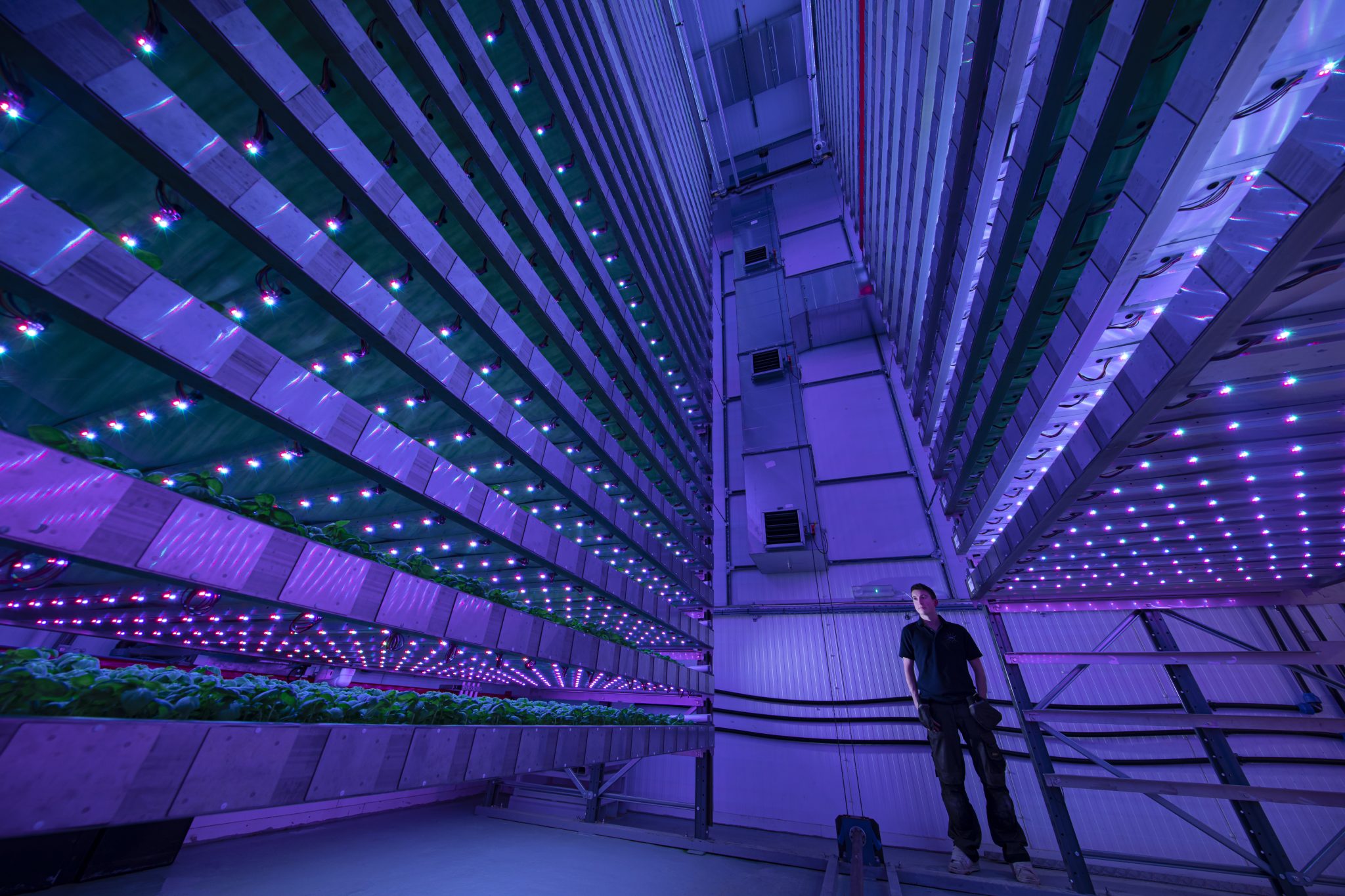Here in a guest blog with CHAP, Dave Scott, Founder and Chief Technical Officer for Intelligent Growth Solutions (IGS), explains how vertical farming can work alongside traditional farming to secure a more sustainable future for crop production.
“Vertical farming enables us to build a precision-controlled growing environment that allows farmers to combat the challenges facing more traditional forms of agriculture. Since IGS was founded, almost a decade ago now, we have been very open about the process and implications of the technology, which has made people more open and accepting of what it can do for them.”
Future-proofing food production
Having access to a vertical farm or similar controlled environment agriculture systems is a valuable tool which can support farmers and growers and help to shore up supply chain reliability. For example, if a severe climatic event impacted crop yield and supply, this could be mitigated by supplementing production in vertical farms. Further uses expand to plant propagation, elevating a crop’s nutritional profile or generating a higher and more reliable yield. Overall, there are hundreds of crop types that can be grown in vertical farms, each with a different purpose, from full seed to harvest crops like herbs or leafy greens, to crops for propagation such as strawberries or brassicas, through to non-edible crops like tree seedlings or plants for pharmaceutical or fragrance industries.
With the expansion of the vertical farming sector, we can also support the traditional farming sector with reliable data and the science we are developing. Each day we gain a deeper understanding of the varied growth cycles for crops and in turn this enables us to finetune the process. It’s key to note that our opinions continue to change and evolve over time, as we are right at the cusp of understanding a plant’s interaction with its environment.
Expanding current knowledge gaps
If we look at one of the primary growth factors for plants – light colour – it is well established that red and blue light promote growth. However, as much as we agree with this concept in principle, the reality is far more complex. There are other colours that contribute to developing a more intense flavour or start the flowering event, for example.
On top of this, what is also essential and has been overlooked in the past is the light supply: does your vertical farm provide a clean static light or is it pulsating? All these different factors are monitored and combined to make up what we call the ‘recipe’. This includes everything that happens to the crop from lighting to watering or nutrient delivery, to inspection or harvesting.
An additional factor that we also incorporate in a recipe is energy efficiency. Our goal is to only use what is essential for crop growth and if implemented correctly, vertical farming can be highly cost effective.
Synergistic collaborations
It’s through such findings that we can contribute to the wider agricultural sector and support cross-industry collaboration. Sharing information is crucial, not only within our own organisation but with research partners and businesses with a similar focus, including the traditional farming sector, commercial growers or seed producers.
As vertical farming is a relatively new industry, you cannot work in isolation. In our case, the IGS Crop Research Centre is positioned next to the James Hutton Institute in Dundee. As a result, we have had the opportunity to team up on this journey. This relationship provided us not only with structure to the data that we captured and stored but also granted us access to research equipment that we would otherwise not have had. It has also given our research real integrity. The collaboration that we as a commercial business have built with them is strong and mutually beneficial.
Paving the way forward for vertical farming
Unfortunately, in recent times we have also seen multiple vertical farming ventures struggling, and even on occasion failing. We have seen businesses striving to be experts across multiple fields: they aim to develop the technology, build and operate farms and sell produce on to offtakers and end consumers.
At IGS, we have made a pledge to the market that we will only ever grow produce for research and development – whether that be for our own or for customer trials. In doing so, we enable growers and farmers to be the experts in their fields while giving them the very best technology to help them succeed. We believe that by focusing on our own area of expertise and not spreading ourselves too thin, we can forge strong relationships across the sector and ensure this nascent industry continues to thrive and deliver real change to the future of agriculture.
Personally, I am looking forward to this technology being adopted on a wider scale and contributing to the knowledge pool of how to grow nutritious, sustainable and healthy crops.”
CHAP aims to build networks of leading scientists, farmers, advisors, businesses and academia to understand industry priorities and develop innovative solutions. To be our next guest contributor, e-mail enquiries@chap-solutions.co.uk
Please note, the opinions expressed in this article are the author’s own and do not necessarily reflect the views or opinions of CHAP.












